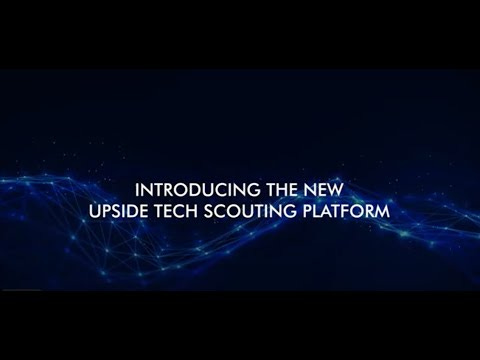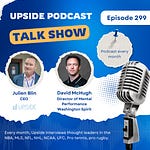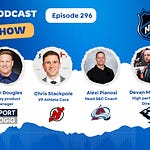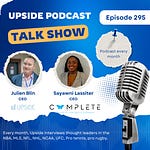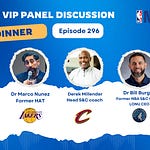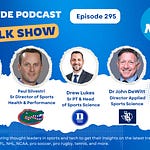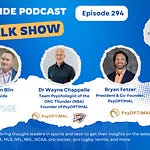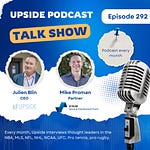This week we had the honor to interview again Dr. Robert Butler, the Director of performance for the St Louis Cardinals, a top MLB team.
📝Show Notes: Through this interview, we touched on his background in elite sports as well as his role at the St Louis Cardinals. We also discussed the best practices to interconnect data resources to inform player curriculum as well as identifying the objective measures to inform progress within a curriculum (beginner to advanced). We also discussed his approach towards injury reduction, his favorite technologies, and what he would build if you had unlimited resources, and the best types of players and coaches he worked with.
🚀Best Quotes: Here’s some of the key discussion points and best quotes from our conversation with Robert:
On his background and his interest for footwear and biomechanics.
“I think growing up as a kid I loved sports, I loved athletics, but maxed out my potential as a well below average 20 year old goalkeeper at a small college in the United States. But I was very passionate about it and enjoyed it. And at the same time, I was interested in footwear, mechanics of footwear and design of footwear and biomechanics”.
“And so I grew up with this real excitement about the technology behind equipment and other things. And at the time when I was growing up, the Predator shoe from Adidas had just came on the market, which was revolutionary with the fins and the spin and all this stuff”.
“And so my interest grew going through my PhD and I actually continued down the soccer coaching path and working on my licenses at the same time and learning more about Soccer coaching. That was going to be something that I could easily see myself going into versus the biomechanics path that I ended up pursuing”.
On his path at Duke University at the FIFA Medical Center of Excellence:
“I started working at Duke University and was lucky enough to be part of the FIFA Medical Center of Excellence and K Lab there working with Dr. Bill Garrett, Dr. Robin Queen, and others there. And we started to have some great discussions about how we think about the return to play piece differently, which really goes from the injury, the medical piece, all the way to integrating sports science, integrating workloads, integrating buildup, integrating the physiology, and eventually getting into the coaching piece”.
On his consulting work in pro soccer (MLS, Premier League), the MLB and NBA:
“ So that actually got me into professional sport consulting with organizations in the Major League soccer, the EPL, the MLB, NBA. There I was talking to teams about how we can communicate, make progress with workloads, and not to be right or wrong, but just put a number on it to discuss about what progress looks like”.
On the differences between working in pro soccer and pro baseball:
“The interesting thing is that the actual measures are very different, such as the upper body and lower body. When you think about what that, what the specific KPIs that you would need to hit for a throwing program, kicking program, whatever it may be”.
“But the spirit and the discussions and the process you go through to identify those, wasn't different at all (…) You could put American football in there, you could put rugby in there, you could put rowing in there, you could put field hockey”.
“The spirit behind which we thought about what needs to occur before an activity as well as what can we do at the same time? Because it's not limiting by the injury or by the physical progress. That was the same no matter what the sport was or the activity was”.
On his current role at Head of Performance at the St Louis Cardinals:
“I currently oversee the strength and conditioning, sports science, nutritional supplementation, mental strength and wellbeing and technology integration for the organization from the Dominican Republic up to our St. Louis team”.
“I also oversee the Minor League Medical, which is from our AAA team, down to the Dominican Republic. And then work closely with our head athletic trainer with our big league club related to our preventative practices with the major league team”.
“And so on a given day, it's really a matter of how do we make sure that the protocols and processes that we have are going on across all those different locations, seven teams in six different locations. And that really starts in early February and goes until sometime in October, hopefully”.
On what he is looking at when assessing potential new technologies:
“I think from our standpoint, when we look at integrating technology, first of all, if we don't have the curriculum to understand knowledge gaps and measurable goals, that's our first step”.
“And knowing that if we have a gap here, that technology can help us fill in a more objective, time efficient, and transparent way to optimize the players and the coach's success related to that learning efficiency, then that's a win for us”.
“But I do think that starting off with a transparent curriculum, a transparent set of goals that you're trying to reach as well as an understanding of being upfront and transparent about, Hey, this is why we're doing X as opposed to Y for you from a training or development standpoint, that's the way to really think about how to optimize and leverage information to support the overall curriculum”.
On his approach towards injury reduction:
“Our first line of injury reduction is our strength conditioning program. And so a lot of what goes into that is our baseline testing, which looks at the general way in which the players move in order to inform what's our best way to progress their movement loads in our controlled manner”.
“And then to give them some movement packages or movement supplements that they need to get them in once again into a bandwidth of what's normal for them or, or what's normal from a standard of movement related to some of our organizational norm relation as well as what we see at the upper levels of success”.
On the importance of working with vendors that want to understand their pain points:
“You really want to work with companies that really understand your organization, and who are willing to work with you, and not just tell you, hey, here is the product, but they really want to understand your pain point and work with you”.
On the importance of learning how to say “no” as the head of performance:
“A lot about high performance is learning what to say no to. And I think you're more efficient in what you say no to when you understand what your curriculum is, what you understand your goals are, and then how you make your decisions and know where your gaps are that that can better support the overall process”.
On what he would build if he had unlimited resources:
“It would be a place where we would have the resources to have an active teaching environment done the right way, and where the teaching needed to happen. And so the opportunity to view the video of a drill, and provide the player an opportunity for a correction, and have some consistent view of what occurred to make sure that we recreate what success looks like”.
“I think we all know that our memory and recollection of what just happened, unless it's on video, we're really disconnected from the truth. And the further away you get from whatever happened, the worse the memory is and the more your brain's trying to fill in whatever it doesn't really recall”.
“The other piece of it will once again be when I think about our culture or community from a baseball standpoint. We have international players. It's an international community of learning. And so how do you translate effectively in a way that really everyone understands it to optimize their development and learning?”.
“And so that would be a very important part of the curriculum, when you think about even the different dialects of the Latin American community: what is the one language/dialect that they learn the most or most efficiently in?….How do we reach them where they are at?”.
You may also like:
⭐⚽ Upside League Profile: Brazilian National Soccer Team & Chat with Guilherme Passos, Sports Scientist On His Favorite Technologies, The Best Players/Coaches He Worked With.
Dear Colleagues, This week we are profiling and interviewing the Brazilian Men National Soccer Team, the most successful national team in the FIFA World Cup, being crowned winner five times. Sports team: Brazil national football team Federation: Confederação Brasileira de Futebol
⭐Upside Team Profile: LOSC (Ligue 1) & Chat with Martin Buchheit, Head of Performance & Sports Performance Consultant
Listen now (29 mins) | Dear colleagues, This month we are kicking off a new series where each month we plan to profile major pro teams and leagues (MLS, NBA, NFL, MLB, NHL, NCAA, European soccer, South American soccer, pro rugby, pro tennis, pro cricket, Olympic teams..). The goal for each sports organization is to highlight their favorite technologies, the impact of those te…
⭐⚽ Upside League Profile: MLS & Chat with Fred Lipka, MLS Vice President of Youth & Player Development.
Listen now (32 mins) | MLS, One of the Most Popular Soccer Leagues in the World Major League Soccer (MLS) has become one of the most popular soccer leagues in the world. Today MLS is a men's professional soccer league sanctioned by the United States Soccer Federation, which represents the sport's highest level in the United States. The league comprises 29 teams—26 in the U.S. …
🔥Upside: AMS Ecosystem Analysis: Key Trends, Vendors and Recommendations to Teams
AMS vendors market analysis: Key Players, Trends, Recommendations to Pro Teams AMS systems, also known as Athlete Management Systems, have become one of the most common types of technologies used by pro teams today. With 20+ AMS vendors out there the space has become extremely competitive and fragmented over the years with sometimes teams using and testi…
⭐🔎📈 EXCLUSIVE: Introducing the New Upside Tech Scouting Platform for Teams, Vendors & VCs.
Dear colleagues, Today we are pleased to announce a new major initiative, the Upside Tech Scouting platform, the world’s first platform providing granular anonymized team data on specific teams (NBA, NFL, MLB, NCAA, Premier League, Laliga, Ligue 1, Bundesliga, national teams, Olympic teams, pro rugby, pro tennis..).







